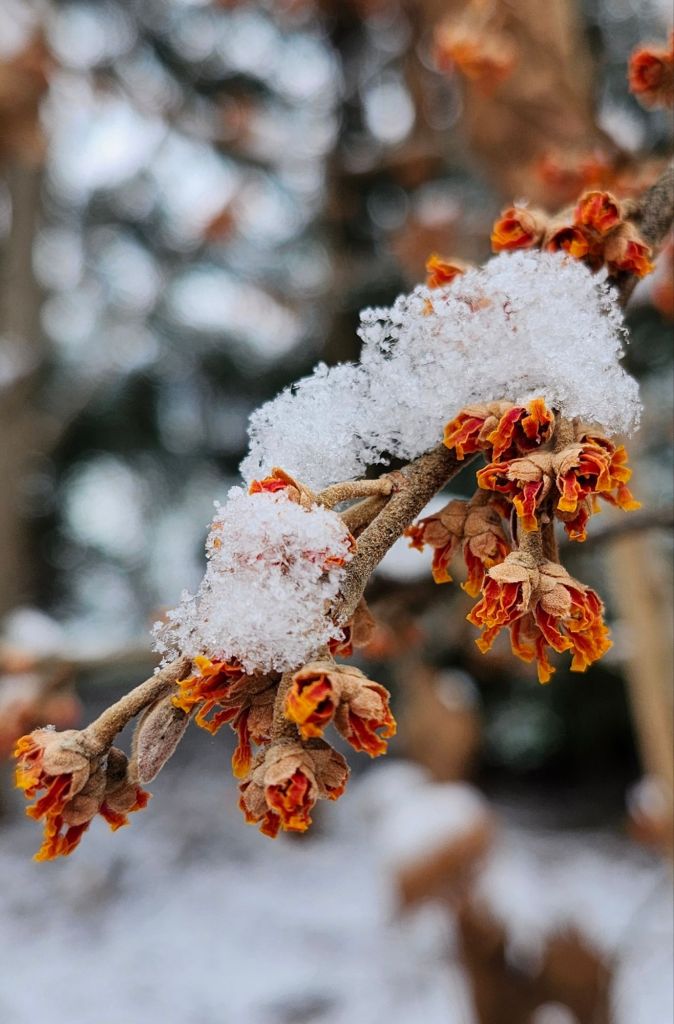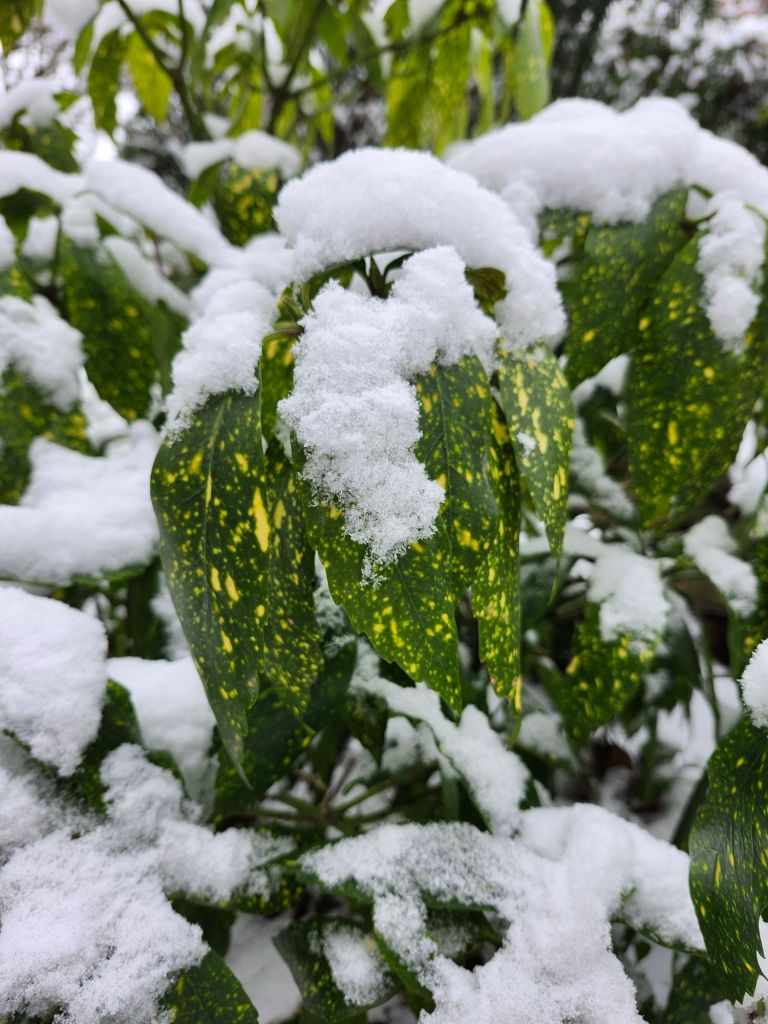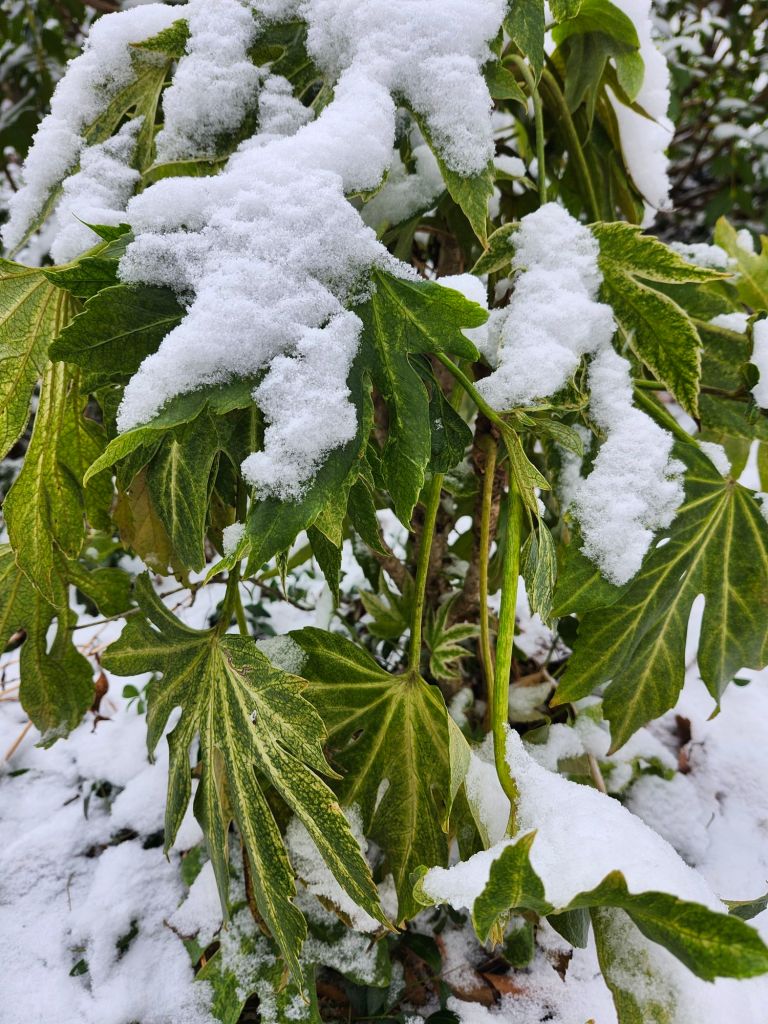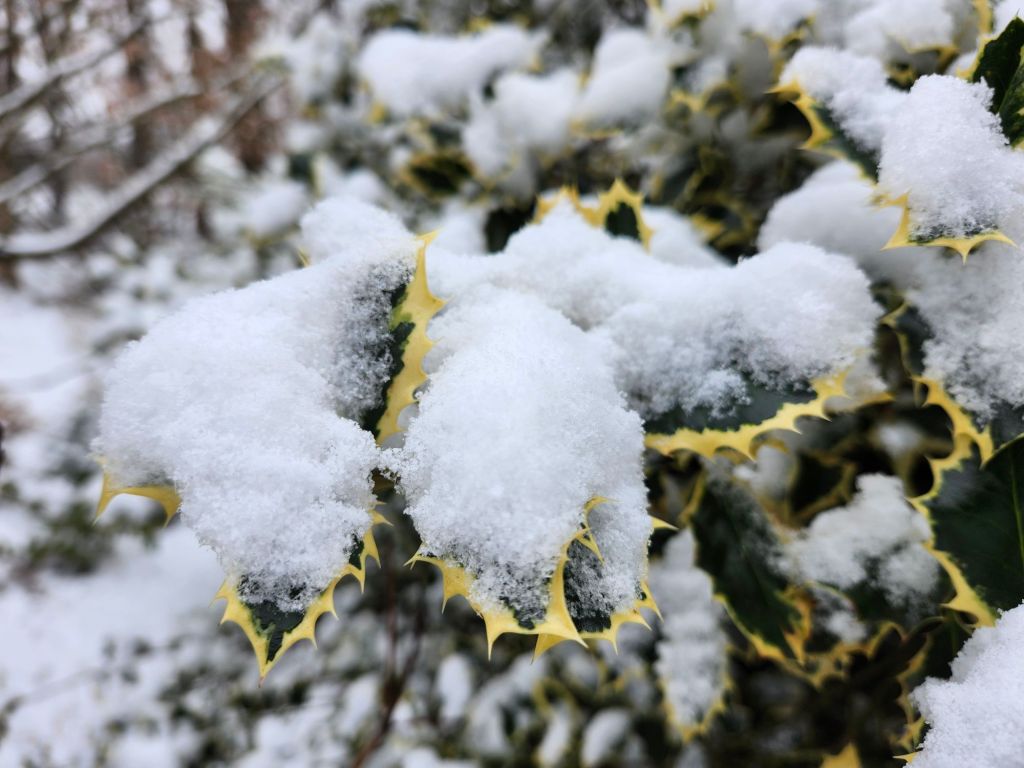No doubt, in its native Australian habitat, grevillea (Grevillea victoriae ‘Murray Valley Queen’, below) did not develop with substantial roots to prevent its tilting after a few inches of snow. As a much smaller young shrub several years ago, the grevillea leaned severely under a much heavier snow load, probably our most recent snowfall of any consequence.

Once noticed, the accumulating snow was brushed from the branches. Some time later, the shrub was staked back to an upright position. No harm was done, and I presume staking will be necessary again once spring arrives. With temperatures falling to five degrees (Fahrenheit) with low teens to follow, no protection will be required for this marginally cold hardy grevillea that has survived several degrees colder with no apparent damage.

The highlight of any snowfall, of course, must be the photo of flowers peaking from beneath the blanket of white. The autumn flowering mahonias (Mahonia x media ‘Winter Sun’, above) are not bothered by snow or the frigid temperatures. With many flowers remaining, I expect all will continue in bloom late into January.

While flowers of mahonias barely acknowledge the winter weather, spidery blooms of the vernal witch hazels (Hamamelis vernalis, above) curl in cold for protection. The flowers, and broadleaf foliage of aucubas, rhododendrons, illicium, and daphniphyllum that snuggle inward to the stems are accurate indicators of temperatures in the mid-twenties and lower. Leaves and flowers will return to their typical positions once temperatures rise a few degrees (which could be in days rather than hours).



The most tender of marginally cold hardy plants in the garden, leaves of the variegated fatsias (Fatsia japonica ‘Spider’s Web’, below) also curl for protection. Unless the cover of snow remains, one newly planted fatsia will be covered by a leaf filled pot along with several hardy bromeliads that are still very questionable with the expected nighttime lows. A more established fatsia does not require protection at this temperature.

Colorful leaves of hollies (Ilex aquifolium ‘Argentea marginata’, below) and needled evergreens (Chamaecyparis obtusa ‘Fernspray Gold’) are marvelous with the cover of snow, and with this relatively light snowfall there is no need to brush away snow.


Wow! You really got some snow!
Not a lot, only four or five inches, but enough to cover the few plants I planned to cover before it drops to five degrees tonight.
Love the Fatsia…remind me which zone you are in? I want to grow one but I don’t know if I can stretch it in Zone 6A…thanks in advance
We’re in zone 7a, but until last night, we had not experienced temperatures colder than seven degrees since the fatsias sere planter, with most winters not dropping below the teens. Last night dropped to five with no damage evident, so I expect it is at least as cold hardy as claimed.